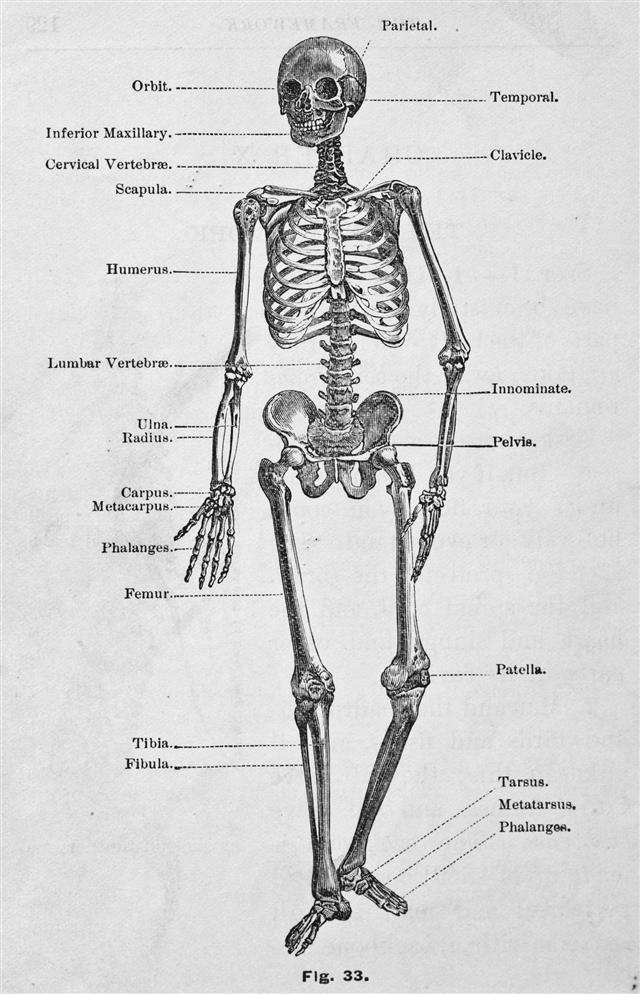
Our spinal cord is known as the "information highway of the body" for a reason. Basically, spinal cord functions can be broadly categorized into two parts — first, information transmission, and second, reflex coordination.
The spinal cord has a crucial role to play in various functions of our body — including the movement of our limbs and the transmission of sensory and motor nerve impulses to and from the brain. Together with brain, it forms the central nervous system, which coordinates the functions of various organs of our body. If the brain is considered to be the command center of our body, the spinal cord would be the pathway through which the brain sends and receives information from various parts of the body. Interestingly, the spinal cord can function on its own at times — without the brain having to come into the picture.
Spinal Cord Anatomy
Basically, spinal cord is a long and narrow bundle of nervous tissues and support cells, which extends from the base of our brain to the upper lumbar region. It passes through the spinal canal or spinal cavity of the vertebral column, i.e., the backbone or spine. The spinal cord consists of millions of nerve fibers which facilitate the transmission of neural signals between the brain and various parts of the body.


The vertebral column is made up of 33 bones called the vertebrae, stacked one upon the other. In between these bones lie the intervertebral discs, which hold them together and facilitate the movement of our backbone. The vertebral column has small spaces through which the spinal nerves exit the spinal cavity and spread throughout the body.
A layer of cerebrospinal fluid (CSF) protects it from getting damaged by coming in contact with the inner side of the vertebral column. The network of nerves which connects the spinal cord to various parts of the body is known as the peripheral nervous system.
Functions of the Spinal Cord
The primary function of the spinal cord is to facilitate transfer of information from the brain to rest of the body and back; and thus the nickname, information highway of the body. On one hand, it sends the sensory information from the sensory receptors spread throughout the body to the brain. On the other, it picks up signals from the motor area of the brain and sends them to the target muscles and glands in the body. Simply put, the spinal cord acts as a bridge between the brain and various organs of the body.

The human vertebral column is organized into five sections; cervical vertebrae (C1-C7), thoracic vertebrae (T1-T12), lumbar vertebrae (L1-L5), sacral vertebrae, and coccygeal vertebrae; the last two being fused vertebrae.
Like the vertebral column, even the spinal cord is organized into sections — each of which controls certain muscles and glands in the body. The spinal cord has 31 pairs of spinal nerves branching out from it; the cervical nerves (8), thoracic nerves (12), lumbar nerves (5), sacral nerves (5), and coccygeal (1). The cervical spinal nerves control signals to our hands, shoulders, neck, back of the head, and diaphragm. This helps us move our neck, raise our arms, rotate our shoulders, etc. The thoracic nerves, on the other hand, extend from T1 to T12 and control signals from muscles in chest, back, and the abdominal cavity.
The lumbar nerves, that can be traced from L1 to L5, control the signals to the third quarter of the body; the lower abdomen, lower back, and hips along with parts of the legs. Then we have the sacral spinal nerves, which control the signals to our thighs, knees, and feet. Both, lumbar and sacral nerves are in control of the signals to the lower part of the body. And lastly, there is the coccygeal nerve, which is assigned the task of transferring signals from the skin of the lower back.
Yet another function of the spinal cord is to coordinate our reflexes. Reflexes are basically the built-in responses of our body to danger stimuli. While the speed at which information travels from the body to the brain and back is very fast, at times, the same is not enough. There are times when the information has to travel even faster and this is where the spinal cord takes the matters into its own hands. Like we said earlier, the spinal cord has the ability to bypass the brain as and when required.
If you touch a hot object, you pull your hand back as soon as you sense the heat. When someone throws a stone at you, you quickly duck to avoid it. In both the cases, you act within split seconds and the same is possible because of the presence of neural circuits in the spinal cord. In such situations, the body reacts faster than the normal time it usually takes — usually as a part of the body’s defense mechanism.
Spinal cord guides some of the most important systems in the body, and any damage caused to it can lead to complications associated with the corresponding system. While the vertebral column is mainly responsible for the protection of spinal cord, most of the spinal cord injuries are traced to the damage induced by vertebral column itself. The injuries can range from a spinal shock lasting for about 24 to 48 hours to something as serious as permanent paralysis.
Almost all important human body functions, including the respiratory control and sexual health, depend directly or indirectly on the spinal cord. Being one of the most important parts of our nervous system, the spinal cord has to be properly guarded from any kind of damage. Simple precautions, like wearing safety gear or avoiding falls, can help you ensure that such injuries are kept at bay, and your spinal cord continues to function in a proper manner.



